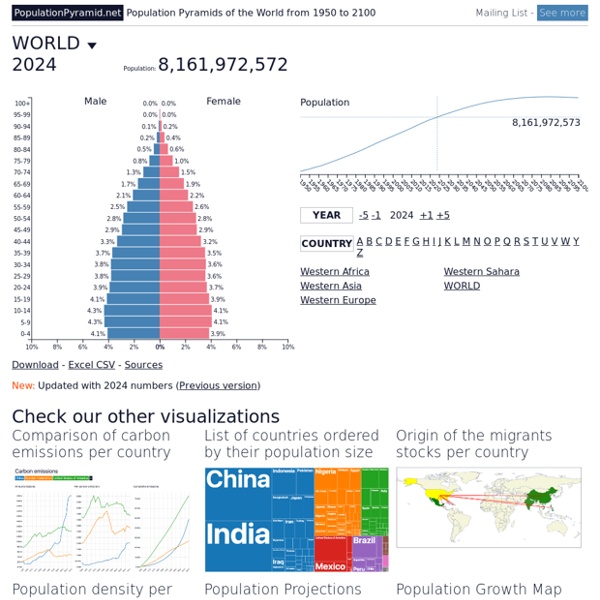Zoom
Trash



https://www.populationpyramid.net/
Related: Geografi • Páginas web • Geografia-futurJapaner vill inte ha sex Foto: AP Konservativa Japan är det land som lär ha den minst tillfredsställda befolkningen. I en undersökning sade sig endast 15 procent av japanerna vara nöjda med sitt sexliv och 45 procent av kvinnorna uppgav att de var ointresserade av – eller till och med avskydde – sex. How artists like Picasso, Lichtenstein, Chagall, and Matisse depict emotion in their paintings Above left: Henri Matisse, "Dance II" (1909-1910); above right: Roy Lichtenstein, "Frighten Girl" (1966). Above left: Pablo Picasso, "The Weeping Woman" (1937); above right: Marc Chagall, "Birthday" (1915). Above left: Roy Lichtenstein, "Grrrrrrrrrrr!!"
The World's Largest Slums: Dharavi, Kibera, Khayelitsha & Neza While the number of people living the five biggest slums in the world amounts to 5.7 million, this is only just a drop in the ocean. Today, by the most conservative estimates, about 900 million people live in slums. But most experts agree that including different types of informal settlements, the number goes up to 1.6 billion – which represents 1/4 of the world’s urban population. By 2030, it’s estimated that it 1 in 4 people on the planet will live in a slum or other informal settlement. Let’s take a tour of the world’s biggest slums: Khayelitsha in Cape Town (South Africa): 400,000Kibera in Nairobi (Kenya): 700,000Dharavi in Mumbai (India): 1,000,000Neza (Mexico): 1,200,000Orangi Town in Karachi (Pakistan): 2,400,000
PhotoMaps All of your photos. On a map. Ready to share. 38 maps that explain the global economy Commerce knits the modern world together in a way that nothing else quite does. Almost anything you own these days is the result of a complicated web of global interactions. And there's no better way to depict those interactions and the social and political circumstances that give rise to them than with a map or two. Or in our case, 38. These maps are our favorite way to illustrate the major economic themes facing the world today. By 2050, flooding could cost the world’s coastal cities over $60 billion a year In 2005, flooding caused $6 billion worth of damage globally. By 2050, we could be hit with 10 times that much in losses — and that’s only if the world’s biggest coastal cities make significant investments to mitigate risk. If we do nothing, costs could soar to $1 trillion. These sobering statistics come from a new study in Nature Climate Change which identifies the 20 coastal metropolises that stand to lose the most when (not if) major flooding occurs in the future.
Universalis cosmographia secundum Ptholomaei traditionem et Americi Vespucii alioru[m]que lustrationes. Rights assessment is your responsibility. The maps in the Map Collections materials were either published prior to 1922, produced by the United States government, or both (see catalogue records that accompany each map for information regarding date of publication and source). The Library of Congress is providing access to these materials for educational and research purposes and is not aware of any U.S. copyright protection (see Title 17 of the United States Code) or any other restrictions in the Map Collection materials. Note that the written permission of the copyright owners and/or other rights holders (such as publicity and/or privacy rights) is required for distribution, reproduction, or other use of protected items beyond that allowed by fair use or other statutory exemptions.
Cities transformed by hygienism: 100 years of local innovation - Metropolitics Hygiene and hygienism have long attracted the attention of historians – historians of urban issues, historians of science and technology, and, more recently, historians of environmental questions, to name but three interlinked fields. Over the course of a lengthy period in history (which, for Stéphane Frioux, begins with Pasteur but whose origins are to be found in the 18th century) that extends from neo-Hippocratism to hygienism, from the bucket to the tap, from the cesspool to sewage treatment, and from the rubbish dump to the incineration plant, cities and urban societies have been profoundly transformed by facilities devoted to sanitation. However, not everything changed everywhere, in the same way and at the same pace: ultimately, Stéphane Frioux challenges any overly uniform or linear vision of change. Intensive dissemination of models, techniques and people The results, divided into five thematic sections separated by case studies, are particularly rich.
Macro with Excel Excel Workbooks Click to download a workbook and open in Excel; make sure to enable macros for full functionality. The workbooks contain screencasts that explain what to do and include tasks that can be assigned.